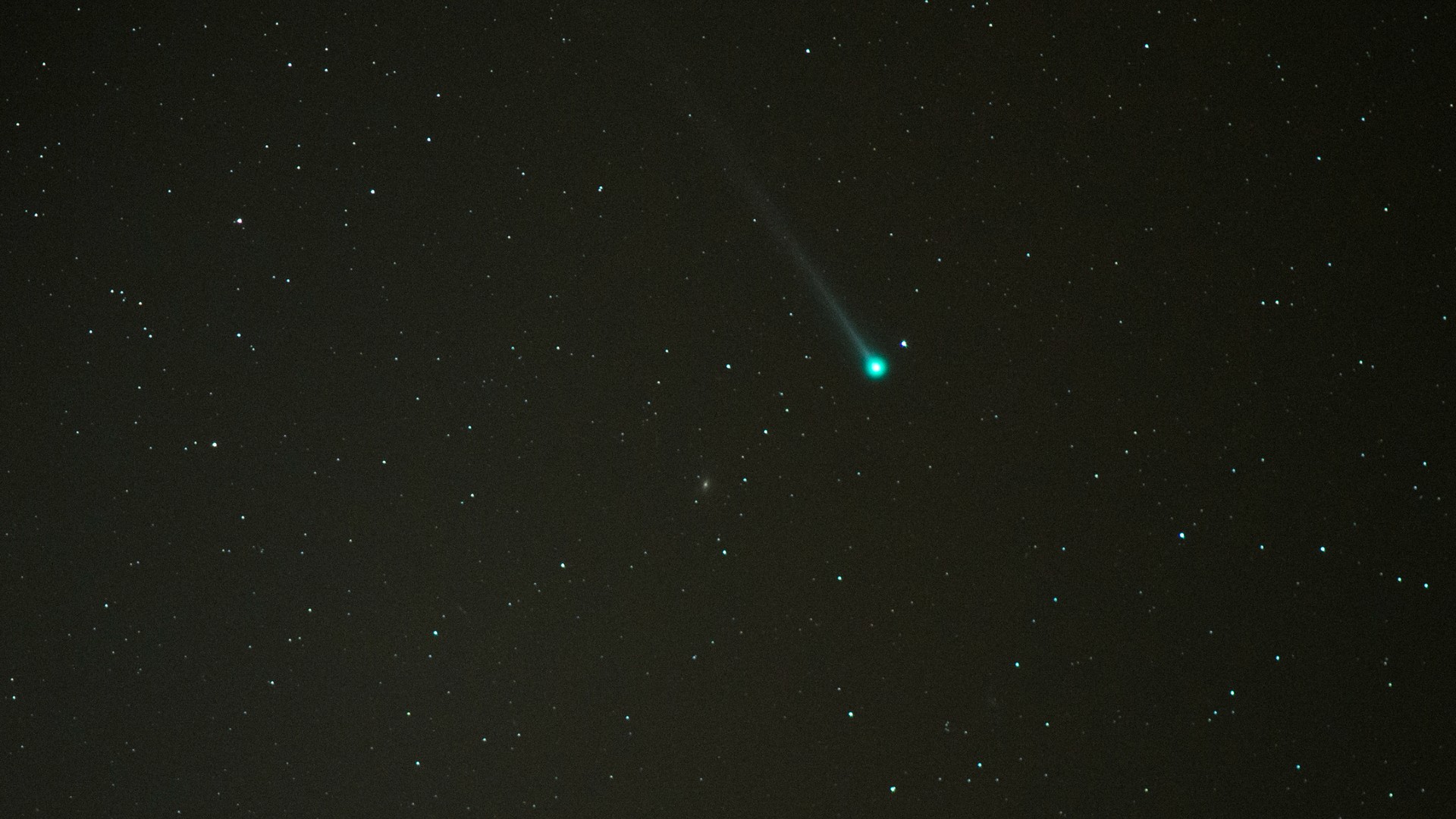Comet C/2022 A2 (Pan-STARRS) passes close by the sun this weekend
This relatively recently discovered comet will make its closest approach to the sun on Saturday, Feb. 18.

While all eyes have been on the famous green comet, formally named C/2022 E3 (ZTF), another comet has been zooming past our planet.
The comet C/2022 A2 (Pan-STARRS) made its closest approach to Earth on Jan. 17, and it's about to hit perihelion, or the closest point to the sun in its orbit, on Saturday, Feb. 18. Unfortunately, this comet will likely only be visible for skywatchers with a large telescope.
From Earth, the comet will be visible at perihelion. According to skywatching site In-the-Sky.org, viewers in New York City will be able to see the comet at dusk on Saturday and dawn on Sunday morning for two brief windows. C/2022 A2 (Pan-STARRS) will first rise above the horizon in the northwestern skies near the Cygnus constellation around 6:36 p.m. EST (2336 GMT). The comet will become difficult to spot by 7:06 p.m. EST (0006 GMT the morning of Feb. 19) as it sinks to just 20 degrees above the horizon. It will, however, make another appearance in the morning of Feb. 19 — from New York, that will happen around 4:17 a.m. EST (0917 GMT) before disappearing at daybreak around 5:39 a.m. EST (1039 GMT).
Related: Comets: Everything you need to know about the 'dirty snowballs' of space
Read more: How to view and photograph comets

Looking for a telescope to see comets in the night sky? We recommend the Celestron Astro Fi 102 as the top pick in our best beginner's telescope guide.
C/2022 A2 (Pan-STARRS) was first discovered in January 2022 by the Pan-STARRS research project, which primarily uses telescopes atop Haleakala, the highest volcano on the Hawaiian island of Maui. The telescopes methodically scan the night sky looking for Near-Earth Objects (NEOs), from comets to asteroids, that might be hazardous to Earth.
Fortunately, most of its discoveries are not headed straight for us. C/2022 A2 (Pan-STARRS), for instance, was about 150 million miles (about 240 million kilometers) away from us at its closest approach to Earth.
On the other hand, the Earth is constantly being bombarded by (typically small) space rocks — a three-foot-long (one-meter-long) asteroid just put on a dazzling light show for viewers in France and the United Kingdom as it burnt up in our atmosphere
Get the Space.com Newsletter
Breaking space news, the latest updates on rocket launches, skywatching events and more!
If you're hoping to catch C/2022 A2 (ZTF) as it approaches the sun, our guides for the best telescopes and best binoculars can steer you in the right direction for gear. And if you'd like to take photos of the event, read our guide sharing how to view and photograph comets, then check out our picks for the best cameras for astrophotography and best lenses for astrophotography.
Editor's Note: If you get a photograph of C/2022 A2 (Pan-STARRS) during its visit to the inner solar system and would like to share it with Space.com's readers, send your photo(s), comments, and your name and location to spacephotos@space.com.
Follow Stefanie Waldek on Twitter @StefanieWaldek. Follow us on Twitter @Spacedotcom and on Facebook.
Join our Space Forums to keep talking space on the latest missions, night sky and more! And if you have a news tip, correction or comment, let us know at: community@space.com.

Space.com contributing writer Stefanie Waldek is a self-taught space nerd and aviation geek who is passionate about all things spaceflight and astronomy. With a background in travel and design journalism, as well as a Bachelor of Arts degree from New York University, she specializes in the budding space tourism industry and Earth-based astrotourism. In her free time, you can find her watching rocket launches or looking up at the stars, wondering what is out there. Learn more about her work at www.stefaniewaldek.com.
-
crimsonbytes What, another rare green comet? Next thing you're going to tell me is that they might discover another rare black and white striped zebra at the zoo..Reply
C/2022 E3 (ZTF) should stop being referred to as "the green comet" and "rare" (though thanks for at least not calling it rare) by those that should know better (like space.com) or at least point out the silliness of the hype.









